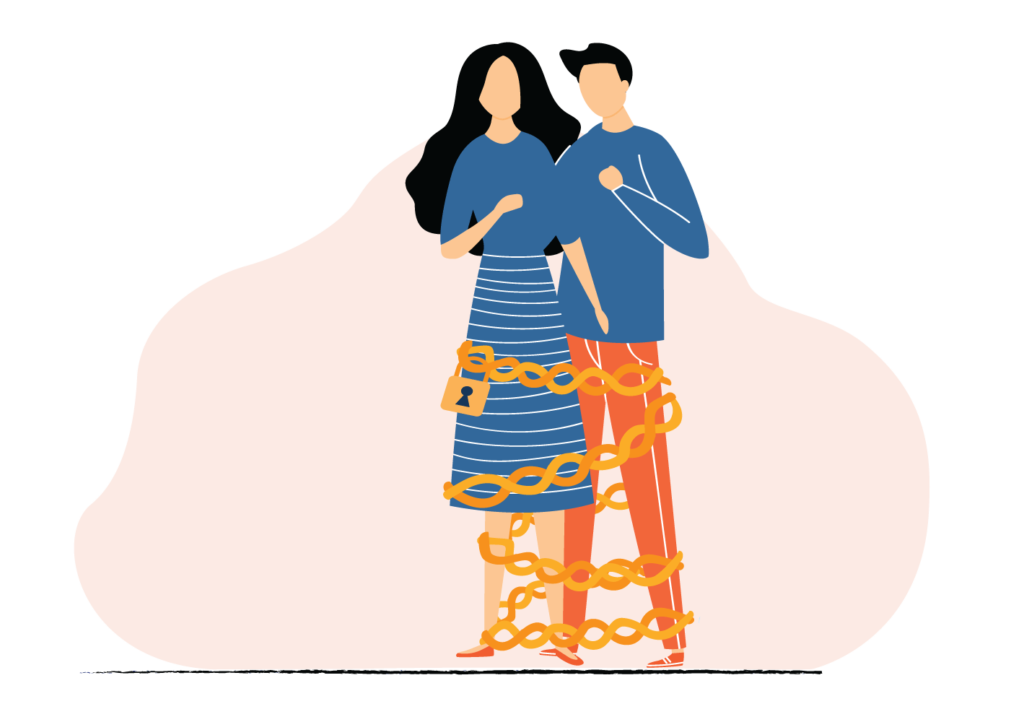A trauma bond is a condition where a person becomes attached to someone who has caused them harm. The term was first coined by Dr. Judith Herman in her book, “Trauma and Recovery”. It is a type of Stockholm Syndrome, where the victim starts to feel sympathy and even love for their captor. Trauma bonds can manifest in many different ways, and it can be very difficult to break free from them without help. In this blog post, we will discuss what trauma bond is, how to recognize it, and how to recover from it.
Contents
Understanding Trauma Bond
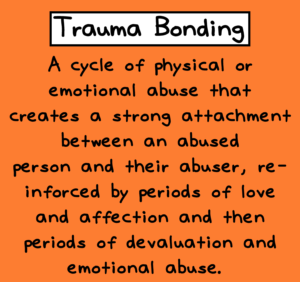
A trauma bond is a condition where a person becomes attached to someone who has caused them harm. This can happen for many reasons, including if the victim feels like they owe the abuser for something or if they have nowhere else to go. Trauma bonds can be very difficult to break because the victim starts to feel sympathy and even love for their captor. This is similar to Stockholm Syndrome, where the victim starts to identify with their abuser.
Cycle of Abuse
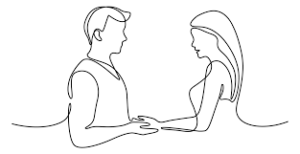
There is a cycle of abuse that often happens in relationships where trauma bonds form. This cycle includes four phases:
- The honeymoon phase: This is when the abuser is on their best behavior. They may be charming, loving, and attentive.
- The tension-building phase: The abuser starts to become more controlling and demanding. They may also become more verbally and emotionally abusive.
- The explosion phase: This is when the abuser physically assaults the victim. They may also threaten or intimidate them.
- The honeymoon phase: The abuser returns to their original behavior in the first honeymoon phase. They may apologize and promise to never abuse their victim again.
This cycle can happen multiple times in a relationship, and it can be very difficult for the victim to break free.
Effects of Trauma Bond
There are several effects of trauma bonds, but some common ones include:
- Dependency: The victim becomes dependent on the abuser for things like food, shelter, or money.
- Guilt: The victim feels guilty for what has happened and believes that they deserve the abuse.
- Shame: The victim is ashamed of the abuse and doesn’t want anyone to know about it.
- Fear: The victim is afraid of what will happen if they leave the abuser.
- Loyalty: The victim is loyal to the abuser despite the abuse.
Trauma Bond Vs. Stockholm Syndrome
It is important to understand the difference between trauma bonds and Stockholm Syndrome. Both involve the victim becoming attached to their abuser, but there are some key differences.
- With trauma bonds, the attachment is usually based on dependency or fear. Trauma bonds are usually formed after a long period of abuse.
- With Stockholm Syndrome, the attachment is usually based on a sense of loyalty or gratitude. Stockholm Syndrome can happen after just a short period.
Recognizing Trauma Bond
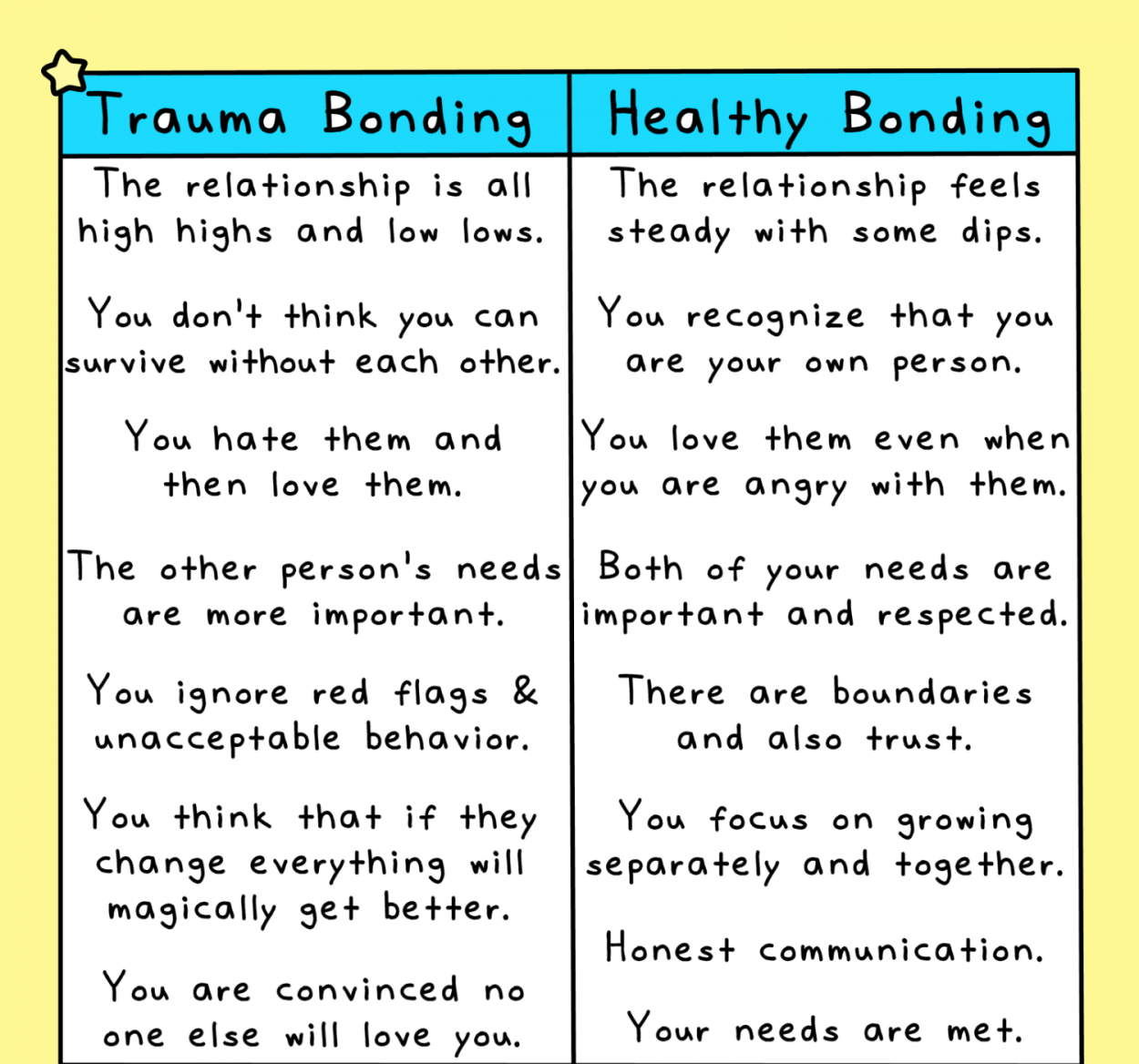
If you think you might be in a trauma bond, there are some signs to look for. You:
- Feel guilty for what has happened.
- Are loyal to the abuser despite the abuse.
- Feel like you owe the abuser for something.
- Are afraid of what will happen if you leave the abuser.
- Are ashamed of the abuse and don’t want anyone to know about it.
If you notice any of these signs, it is important to seek help.
Breaking Free From Trauma Bond

Breaking free from a trauma bond can be very difficult, but it is possible with help. Here are some self-help tips:
Self-help Tips
If you are in a trauma bond, there are some things you can do to help yourself.
- Identify your feelings towards the abuser. It is important to understand why you are attached to them. This will help you start to work on breaking the bond.
- Talk to someone who can help you understand what you are going through. This can be a friend, family member, therapist, or support group.
- Make a safety plan. This should include things like where you will go and who you will call if you need to leave quickly. This will help you if you need to get away from the abuser.
- Reach out to a support group for survivors of abuse. This can provide you with support and information from people who have been through what you are going through.
- Talk to a therapist about what you are going through. A therapist can help you work through the emotions you are feeling and start to heal from the trauma.
Self-help Tools
Some tools can help you if you are in a trauma bond.
- Books: There are many books about abuse and recovery that can provide you with information and support.
- Websites: Some websites offer information and support for people in abusive relationships.
- Support groups: Some groups meet in person or online that can provide you with support and information.
- Therapists: Talking to a therapist can help you work through the emotions you are feeling and start to heal from the trauma.
Recovering From Trauma Bond
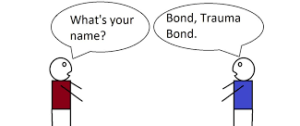
Recovery from a trauma bond is possible, but it takes time. Here are some tips for recovery:
- Give yourself time: Recovery can take weeks, months, or even years. It is important to be patient and give yourself time to heal.
- Talk to a therapist: A therapist can help you work through the emotions you are feeling and start to heal from the trauma.
- Join a support group: Some groups meet in person or online that can provide you with support and information.
- Read books about abuse and recovery: Many books can provide you with information and support.
- Talk to a friend or family member: Talking to someone who understands what you are going through can be helpful.
- Take care of yourself: Recovery is hard work. It is important to take care of yourself by eating well, exercising, and getting enough rest.
Talking To a Professional
If you think you might be in a trauma bond, it is important to talk to a professional. A therapist can help you understand what you are going through and start to work on breaking the bond. Though there are also support groups that can provide you with information and support. However, therapy under the guidance and support of a therapist will allow you to make a peace with your traumatic bond elaborately and holistically.
Therapies
Many different types of therapy can help you if you are in a trauma bond.
- Cognitive Behavioral Therapy: This type of therapy can help you change the thoughts and behaviors that keep you in the bond.
- Eye Movement Desensitization and Reprocessing: This type of therapy can help you process and heal from the trauma.
- Trauma-Focused Cognitive Behavioral Therapy: This type of therapy can help you work through the trauma and start to heal.
Skills That You Will Learn
In therapy, you will learn skills that can help you if you are in a trauma bond. These skills include, how to:
- Deal with triggers: A trigger is something that brings back memories of the abuse. You will learn how to deal with triggers so they don’t take over your life.
- Cope with emotions: You will learn how to cope with the emotions you are feeling. This can help you start to heal from the trauma.
- Have healthy relationships: You will learn how to have healthy relationships with others. This can help you break the cycle of abuse.
Conclusion
If you are in a trauma bond, there is help available. Many resources can provide you with support and information. With time and effort, you can recover from the trauma bond and start to heal.
If you think you might be in a trauma bond, or if you are being abused, please reach out for help. You deserve to be safe and to be treated with respect.
A Word From Therapy Mantra
Your mental health — Your psychological, emotional, and social well-being — has an impact on every aspect of your life. Positive mental health essentially allows you to effectively deal with life’s everyday challenges.
At TherapyMantra, we have a team of therapists who provide affordable online therapy to assist you with issues such as depression, anxiety, stress, workplace Issues, addiction, relationship, OCD, LGBTQ, and PTSD. You can book a free therapy or download our free Android or iOS app.
